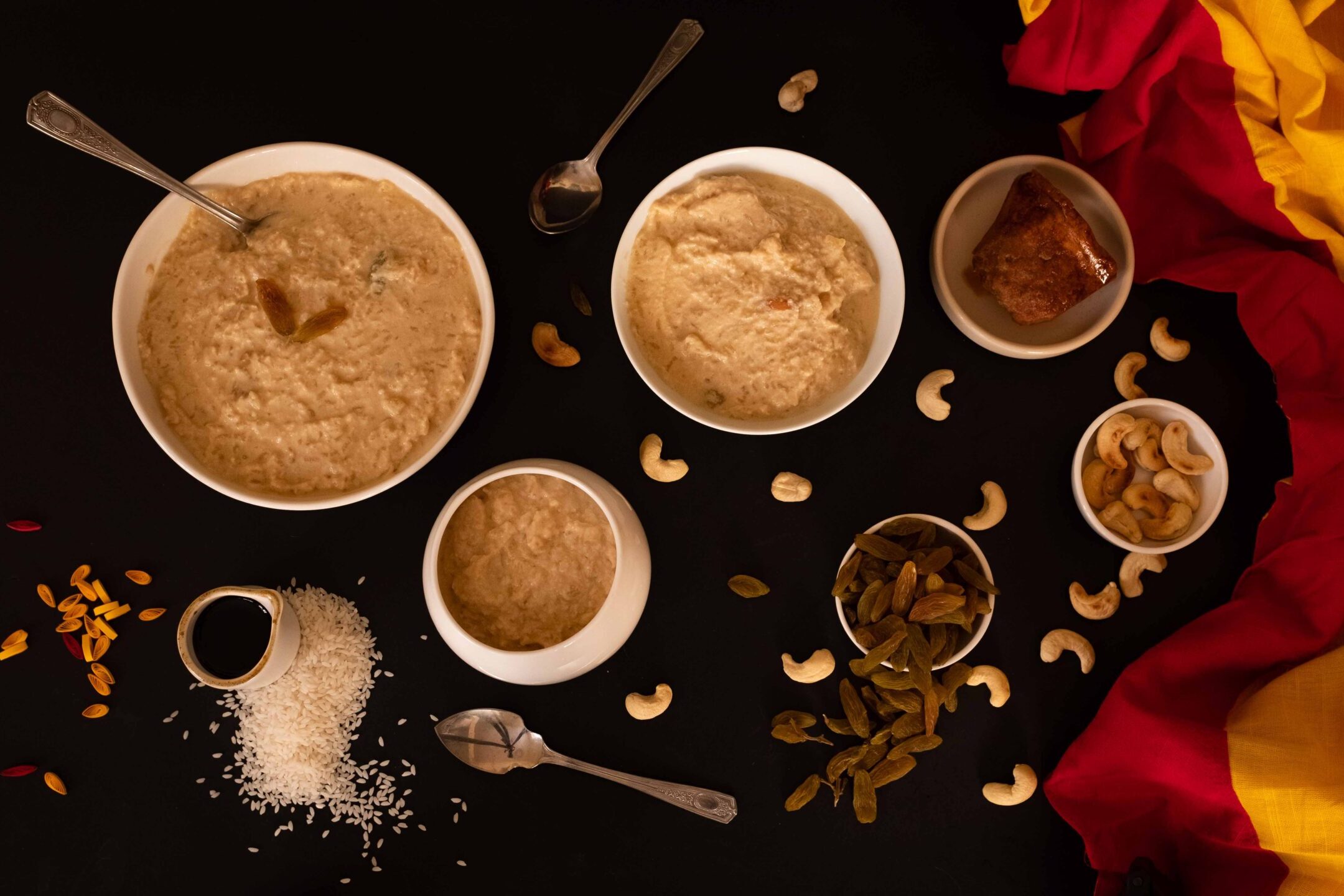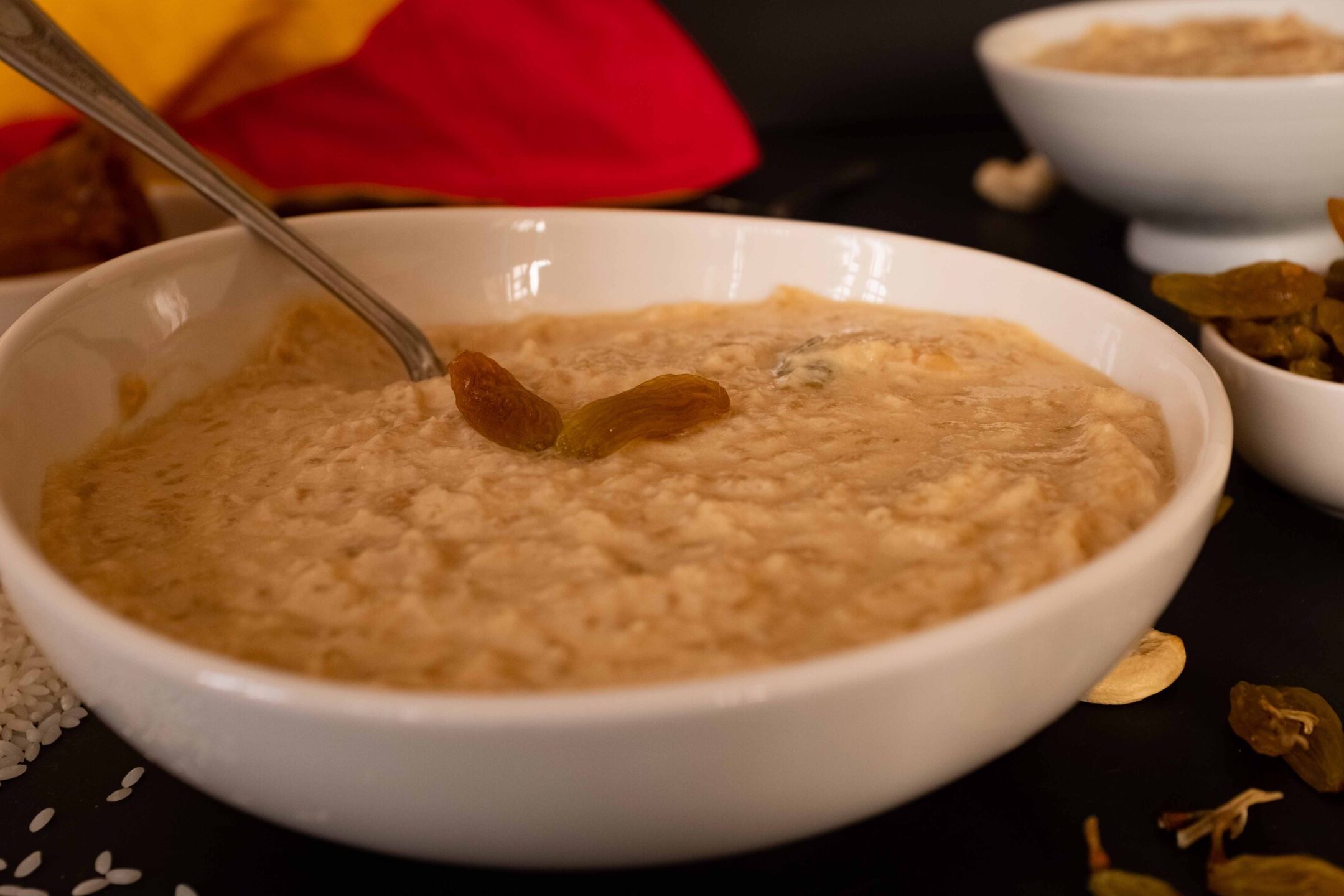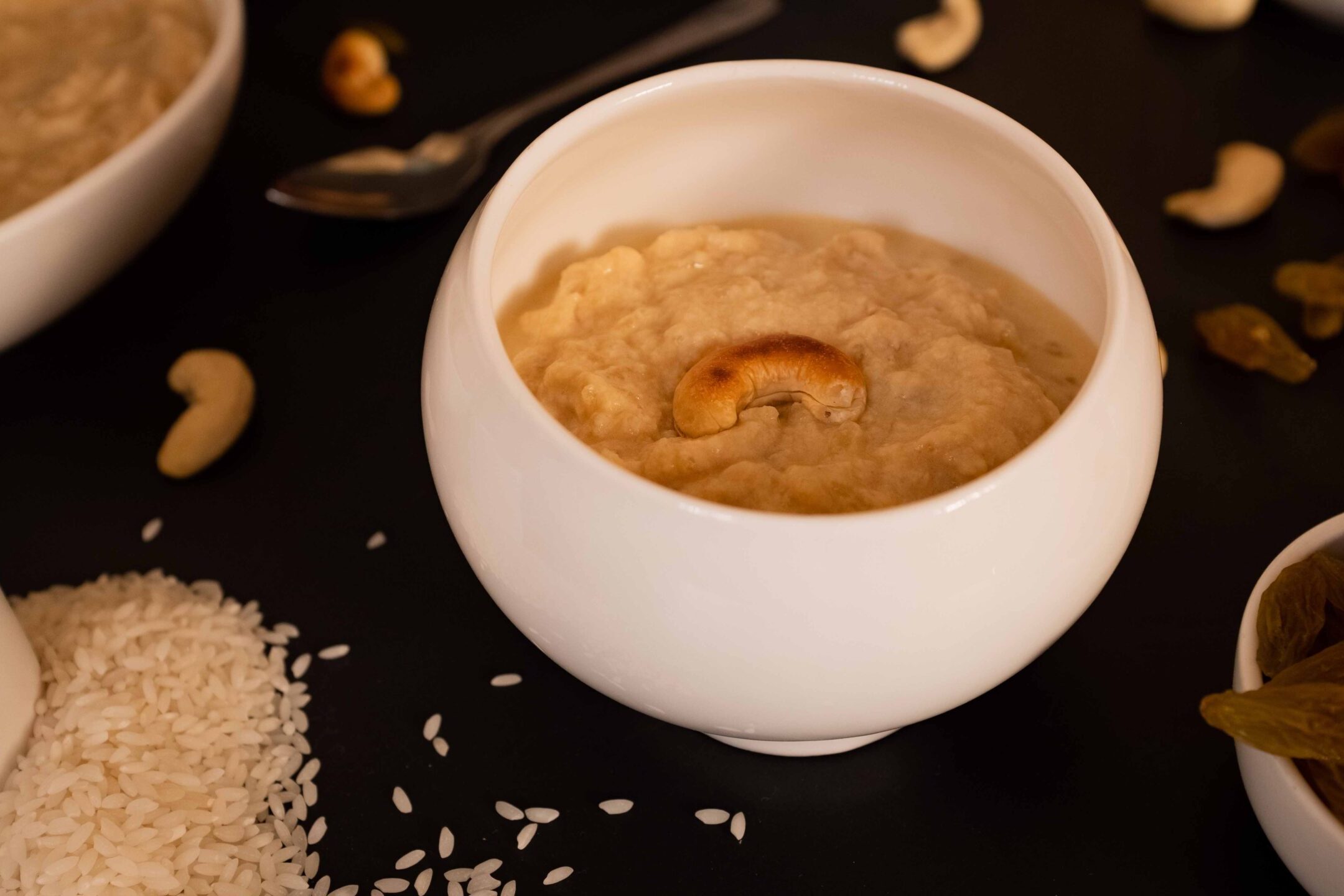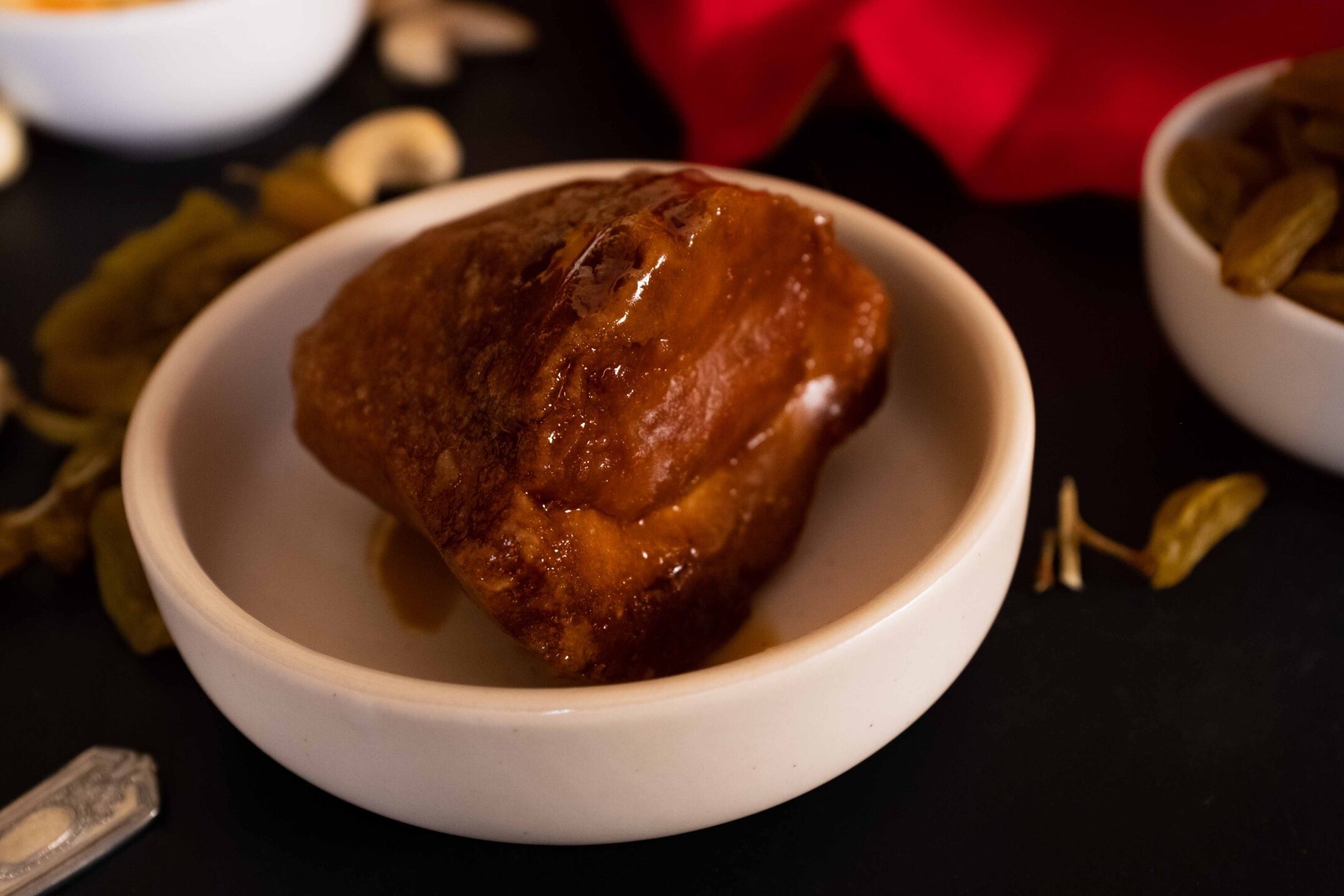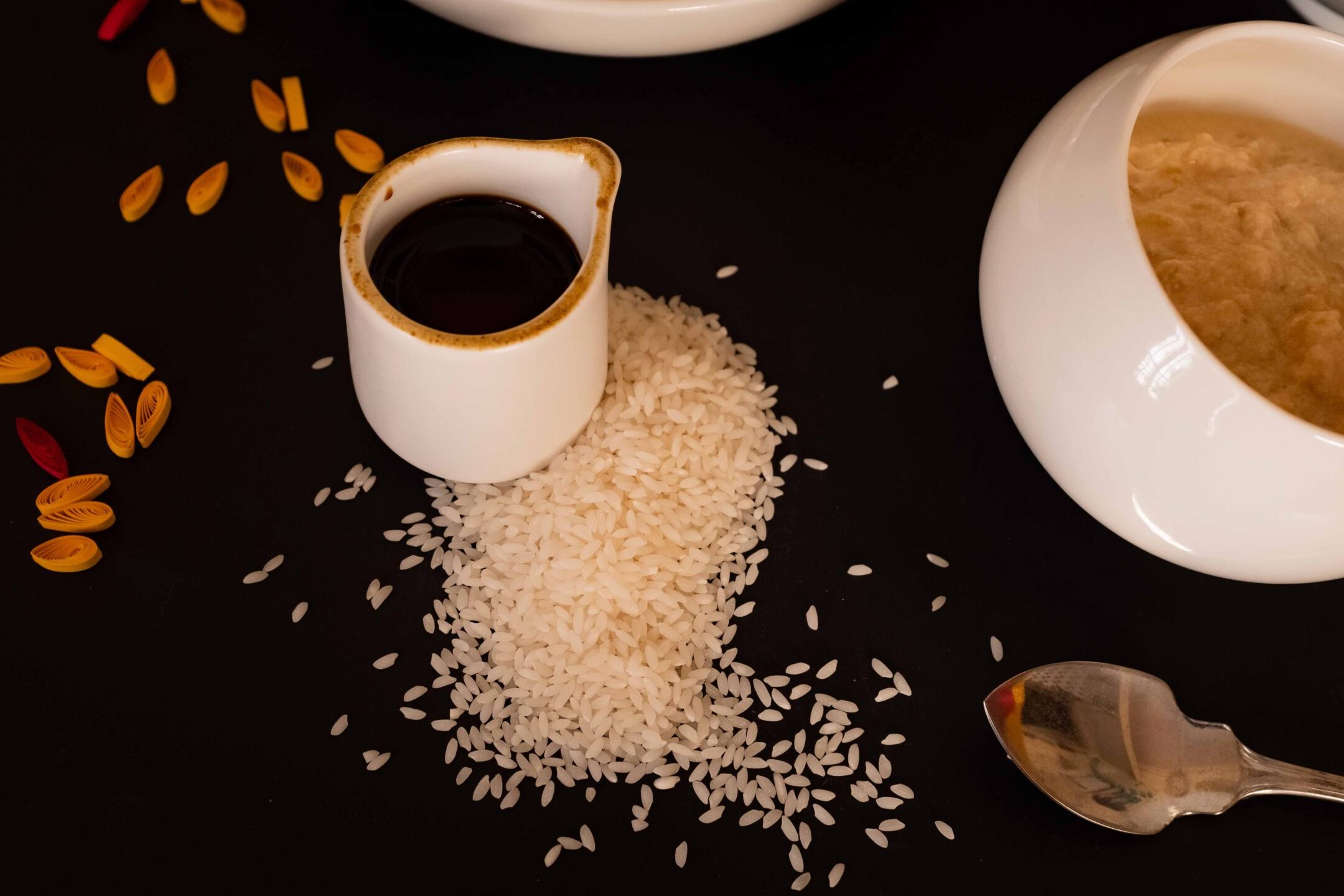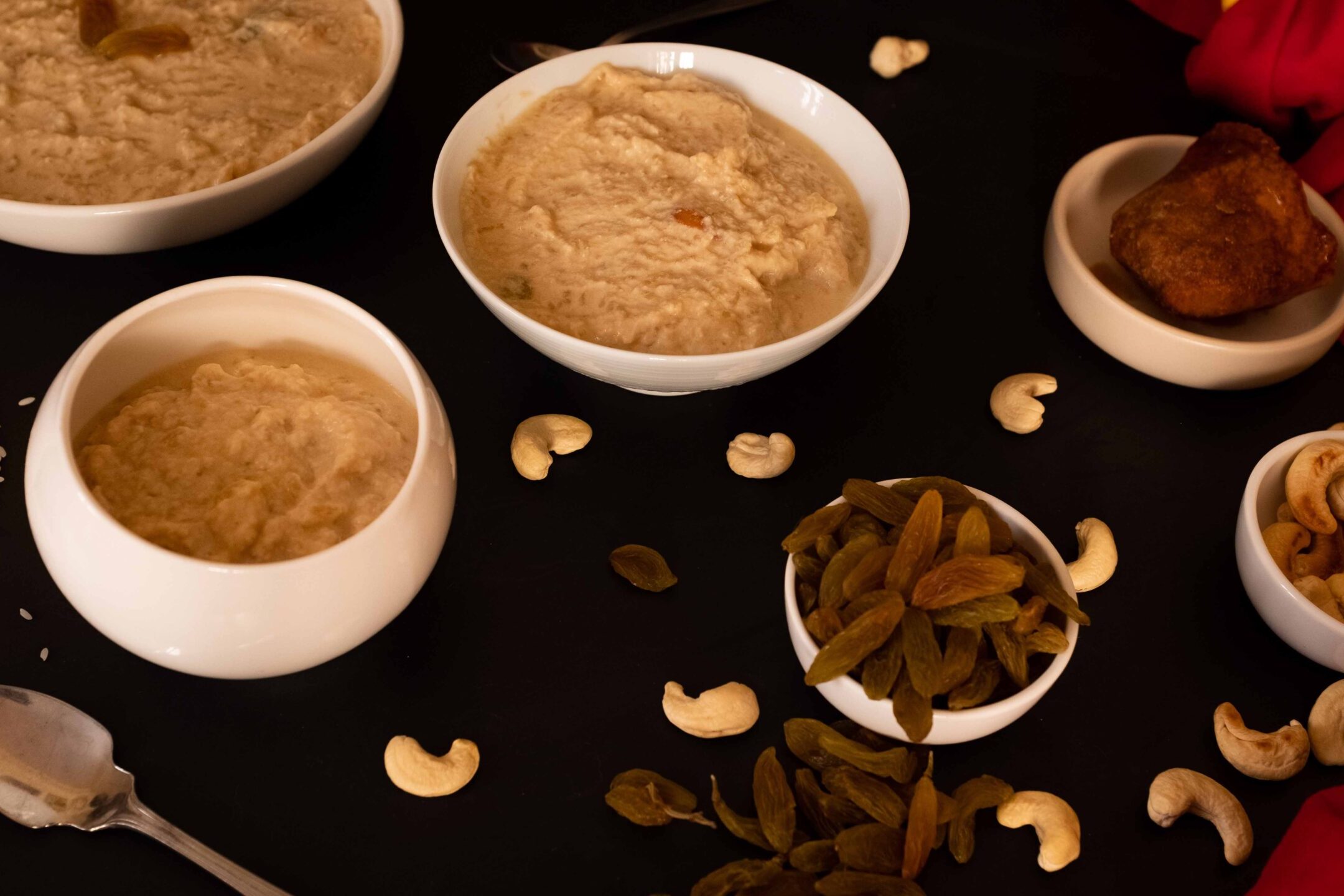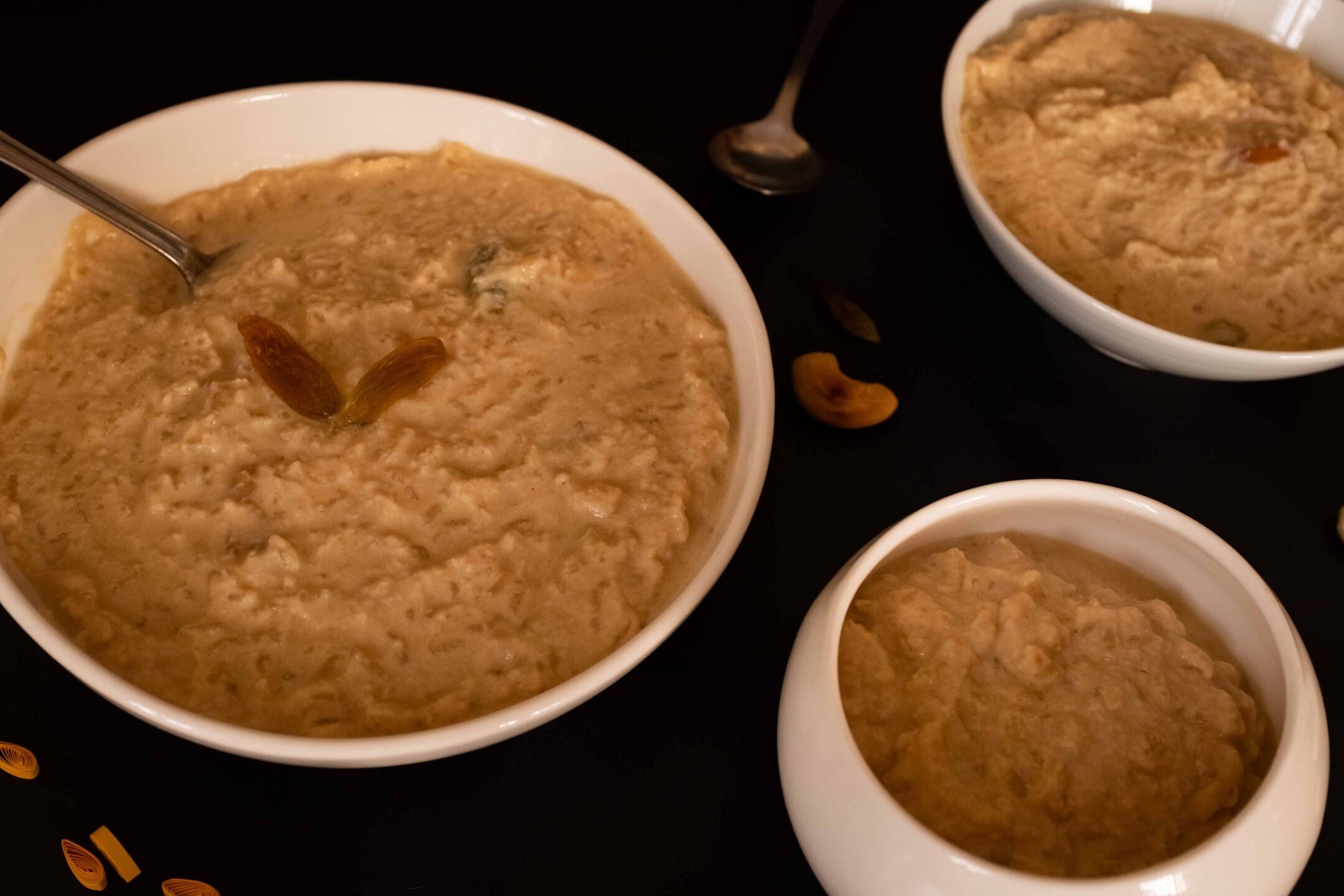Makes 4-6 servings.
In Bengal, the humble rice pudding is synonymous with auspiciousness. From grand weddings and religious rituals to quieter personal milestones, a spoonful of payesh can transform any occasion into a celebration. Every Bengali has their own beloved family recipe. Comprising just a few choice ingredients, this one was passed down by my dida to my mum, to me. Made with extra care, this “bhog” style payesh is offered to the deities to appease them. Humble in its elements yet complex in flavour, this is a rice pudding that’s fit for the Gods.
At a glance
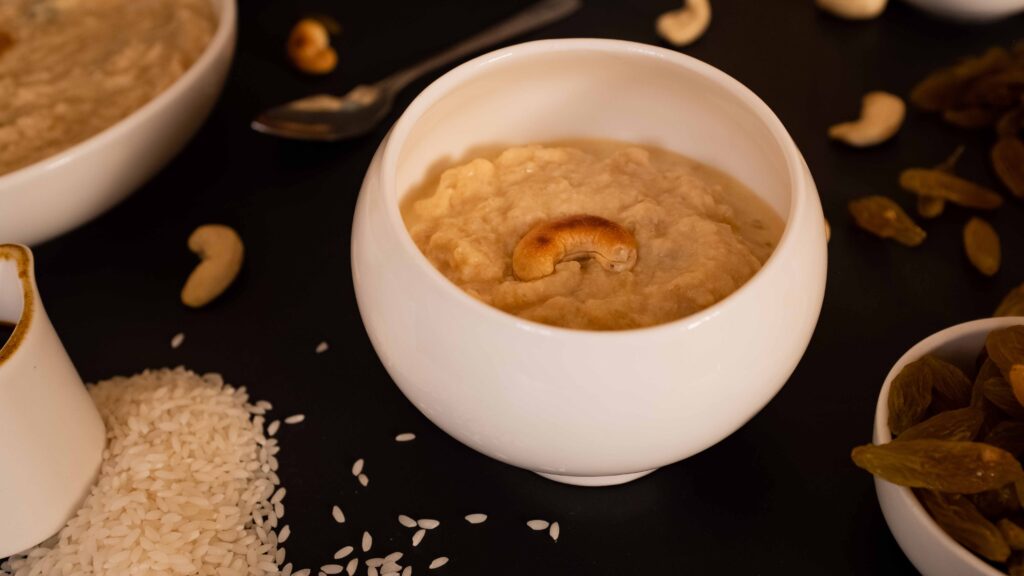
– This dish is all about the rice, the ghee, and the gur.
– You will need a medium kadhai/cooking pot (3-4 litre capacity).
– This recipe has been broken into prep and cooking. Please read the entire recipe from start to finish before beginning.
Ingredients
1. 50 gm new gobindobhog rice (notun/aatop chaal)
2. 150 gm date palm jaggery (nolen gur/khejur’er patali gur)
3. 1 litre full fat milk
4. 20 golden raisins
5. 15 whole cashew nuts
6. 2 tsp Bengali cow milk based ghee like this
7. 1/4th tsp salt
8. 60-120 ml hot water at the ready
Whole or full-fat milk is necessary to achieve the silky, creamy, unctuous texture of a rich rice-pudding. And while neither raisins nor cashews are integral to this payesh, they do make it better. Golden raisins, specifically, add bursts of fruity sweetness, without imposing their own flavour onto the dish. Cashew nuts provide relief to the sweet dish; by way of texture as well as savouriness.
Prep
1 – Soak the raisins in some water to plump them up. This will take about 2-3 hours, so do this step of the prep well in advance.
2 – Chop the jaggery into small shards. Keep aside.
3 – Split the whole cashews down the middle into clean halves.
4 – Ready the rice: Wash the rice just 3 times, without scrubbing at the grains. For this dish, we don’t want the rice washing-water to run clear, as some starch content must be present to thicken the payesh. After washing, submerge the rice in fresh water and let it soak for 30 minutes. After 30 minutes, use a fine-meshed strainer to drain the rice and spread the grains out to air dry. You could also place the soaked and drained rice under a fan to speed things up. Once the rice is dry, transfer it to a small bowl. Add 1 teaspoon of ghee to the bowl and coat the grains of rice with the ghee. Keep aside. If you prefer a mushier rice texture, where the rice grains break while cooking, you could skip the coating of ghee and par-boil the rice before proceeding.
Cooking
1 – Heat 1 teaspoon of ghee in a kadhai. When it has completely melted, add the cashew nut halves. Fry them on low heat until they turn golden. Remove them from the pan and keep them aside.
2 – Pour the milk into your kadhai and raise the heat to medium. Once the milk comes to a boil, continue to simmer the milk for about 15-20 minutes. We are looking to thicken the milk by reducing it by roughly 10-15%. Remember to routinely stir and scrape the milk solids back into the boiling milk. This will also prevent the milk from burning.
3 – Lower the heat to minimum and the add the ghee-coated rice to the bubbling milk. Simmer everything on low heat until the rice is fully cooked and plumps up. This will take roughly 25-30 minutes. Stir gently throughout this process. Not only will that ensure that the payesh doesn’t burn; stirring will also release the starch from the rice, which will help thicken the payesh. Rice grains sitting in payesh will firm up, so it’s okay to overcook the rice, but absolutely not okay to undercook it. I cannot stress this enough. If the rice has not cooked and the milk has thickened down, add 60ml of hot water and continue cooking. Repeat this as necessary until the rice is fully cooked. You will know the rice is done when you mash a grain between your forefinger and thumb and it squashes down with zero resistance. Taste the rice as well. It should melt away in your mouth.
4 – Once the rice is fully cooked, turn off the heat. Add in the chopped jaggery, along with the salt, soaked raisins, and fried cashew halves. Stir everything together and cover the kadhai for 10 minutes to allow the residual heat to melt the jaggery into the mixture.
5 – Remove the lid and stir everything together one final time. Serve your bhog’er payesh hot, at room temperature, or chilled from the fridge. It’s delicious no matter what.
This is a dish that you eat with your mouth…and your nose. Therefore, the use of authentic ingredients is paramount. Additionally, because this is a no frills recipe that uses just a handful of ingredients; those ingredients are fundamental to its success. I’ve made this payesh with basmati rice, yellow buffalo ghee, and cane jaggery. It just doesn’t match up. There is simply no substitute for the intense buttery fragrance of gobindhobog rice, the nuttiness of brown cow ghee, and the deep, malted notes of nolen gur. Without this traditional holy trinity, it’s just ordinary rice pudding or kheer, and not the divine bhog’er payesh. Whether hailing from India or Bangladesh, we Bongs take our beloved food habits along with us, wherever we go. Try your best to source the ingredients that make this dish so singular. If you look hard enough, you’re sure to find them in a specialty Bengali grocery store, tucked away in your part of the world.

